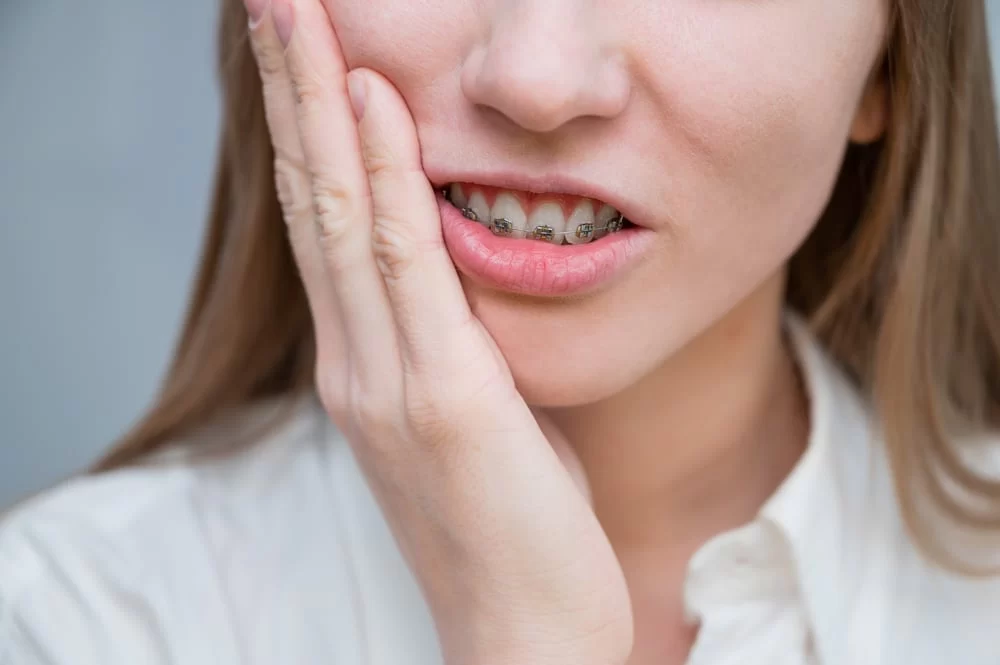
- Why Gum Pain Occurs After Braces Adjustment
- Common Causes of Gum Pain Post-Adjustment
- Personal Stories and Experiences with Gum Pain
- Tips to Manage and Relieve Gum Pain Safely
- Professional Advice and Where to Find Support
Why Gum Pain Occurs After Braces Adjustment
Experiencing gum pain after braces adjustment is a common concern among orthodontic patients. When braces are tightened or adjusted, they apply pressure not only to the teeth but also to the surrounding gum tissues. This pressure can lead to inflammation and soreness in the gums, which is often perceived as pain.
The gums are sensitive soft tissues, and the movement of teeth during orthodontic treatment naturally affects them. After an adjustment, the tissues undergo a healing process where minor irritation or swelling may occur. Understanding this biological response helps patients recognize that some discomfort is normal, though persistent or severe pain should always be evaluated by a professional.
The Biological Response Behind Gum Discomfort
The orthodontic force applied during adjustment triggers remodeling of the bone and movement of teeth. This process activates an inflammatory response, increasing blood flow and immune cell activity around the gums. While necessary for tooth movement, this inflammation can cause tenderness and sensitivity, resulting in the characteristic gum pain many patients report after their appointments.
Common Causes of Gum Pain Post-Adjustment
Identifying the specific causes of gum pain after braces adjustment helps in managing it effectively. Here are some detailed causes:
1. Pressure from Tightened Wires and Bands
After an adjustment, orthodontic wires and bands exert increased pressure to shift teeth into new positions. This force can irritate the gums adjacent to the brackets, leading to soreness and mild swelling.
2. Gum Irritation from Brackets and Appliances
Sometimes, brackets or metal components may rub against the gums, causing small abrasions or ulcers. These irritations contribute significantly to pain and discomfort following an adjustment.
3. Inflammation Due to Oral Hygiene Challenges
Braces can trap food particles and make brushing difficult, increasing the risk of plaque buildup. After adjustments, inflamed gums from plaque accumulation become more sensitive and painful.
4. Allergic Reactions or Sensitivities
In rare cases, patients may develop sensitivities or mild allergic reactions to orthodontic materials, which can exacerbate gum pain and inflammation after adjustments.
Personal Stories and Experiences with Gum Pain
Jessica, a 22-year-old university student, shared her experience with gum pain after braces adjustment. She described the initial soreness as “a dull ache, almost like a sore muscle,” which lasted about three days. Jessica found relief by using warm salt water rinses and soft foods during this period. Her story reflects what many patients go through and demonstrates practical coping strategies.
Another popular story circulating in orthodontic communities describes a young athlete who ignored mild gum pain after his adjustment, only to develop swelling due to poor hygiene around the brackets. This experience underlines the importance of proper care and timely responses to discomfort.
How Sharing Experiences Builds Awareness
Stories like Jessica’s and others help patients feel less alone in their journey, encouraging open communication with their orthodontist and adherence to recommended care routines.
Tips to Manage and Relieve Gum Pain Safely
Managing gum pain after braces adjustment involves a combination of good oral hygiene, gentle care, and sometimes, home remedies. Here are some practical steps:
1. Maintain Excellent Oral Hygiene
Brushing and flossing carefully around brackets reduce plaque buildup, minimizing inflammation and discomfort. Using interdental brushes and water flossers can be particularly effective.
2. Use Soothing Rinses
Warm salt water rinses help reduce swelling and disinfect irritated gums. Rinsing two to three times daily after meals can accelerate healing.
3. Apply Orthodontic Wax
Applying orthodontic wax over brackets or wires that irritate the gums provides a protective barrier, reducing pain from rubbing.
4. Follow Dietary Recommendations
Soft, non-acidic foods minimize gum trauma. Avoiding crunchy, sticky, or spicy foods after adjustments can prevent further irritation.
5. Use Over-the-Counter Pain Relievers Wisely
When discomfort is more intense, non-prescription pain medications like ibuprofen can provide relief. However, usage should follow the guidance of healthcare professionals.
Professional Advice and Where to Find Support
While mild gum pain is typical after braces adjustments, persistent or severe pain should be assessed by an orthodontist or dentist. Underlying issues such as infection or improper appliance fitting may require professional intervention.
For those seeking trustworthy products and personalized care recommendations, Dentistry Toothtruth offers expert consultations and a curated selection of orthodontic care essentials. Their knowledgeable team helps patients navigate treatment-related discomfort and select appropriate oral health products to ease gum pain.
Orthodontic treatment is a journey, and with the right information and support, managing causes of gum pain after braces adjustment becomes a manageable part of achieving a healthy, confident smile.







 Boardman Rebecca DDS5.0 (4 review)
Boardman Rebecca DDS5.0 (4 review) Brian Kerr DMD, PS4.0 (827 review)
Brian Kerr DMD, PS4.0 (827 review) The Dental Market5.0 (103 review)
The Dental Market5.0 (103 review) Sugar Hill Family Dental4.0 (83 review)
Sugar Hill Family Dental4.0 (83 review) Newtown Orthodontics4.0 (117 review)
Newtown Orthodontics4.0 (117 review) Community Health Centers4.0 (206 review)
Community Health Centers4.0 (206 review) The Importance of Oral Health Education During Pregnancy for a Healthy Pregnancy
The Importance of Oral Health Education During Pregnancy for a Healthy Pregnancy Best Tips for Brushing Your Teeth Properly for Healthy Gums: Essential Techniques for Oral Health
Best Tips for Brushing Your Teeth Properly for Healthy Gums: Essential Techniques for Oral Health Why Skipping Dental Checkups Can Lead to Bigger Oral Health Problems
Why Skipping Dental Checkups Can Lead to Bigger Oral Health Problems Advantages of Porcelain Dental Restorations
Advantages of Porcelain Dental Restorations How Can Diabetes Cause Tooth and Gum Problems? Preventing and Managing Oral Health Issues
How Can Diabetes Cause Tooth and Gum Problems? Preventing and Managing Oral Health Issues Healthy Habits for Promoting Good Oral Health and Hygiene: Tips for a Healthy Smile
Healthy Habits for Promoting Good Oral Health and Hygiene: Tips for a Healthy Smile